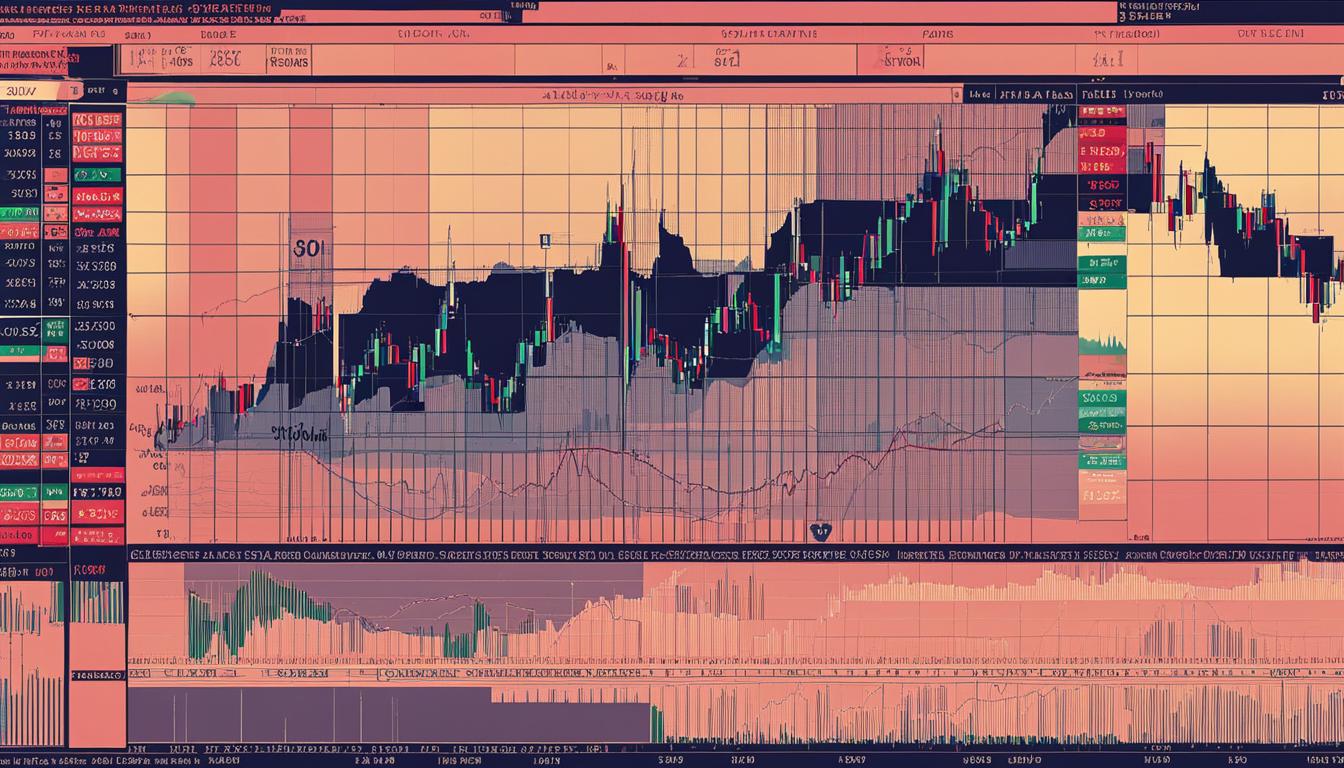
Introduction
Paper trading for options allows traders to practice their strategies without risking real money. By utilizing virtual funds and real-time market data, you can simulate trades in a live market environment. This offers an invaluable opportunity to refine your strategies and build confidence before transitioning to live trading.
Before we move forward, it’s important to understand some key concepts that will enhance your understanding of paper trading for options.
- Options quotes provide comprehensive information about these financial instruments. Understanding the various components of an option quote is crucial in making informed trading decisions.
- One must grasp the differences between implied volatility and realized volatility as they play a significant role in option pricing and strategy development.
- It is essential to have knowledge about different option strategies such as the short straddle, which involves selling both puts and calls simultaneously. This strategy can be profitable if executed correctly, but it requires a deep understanding of market dynamics.
- Let’s not forget the importance of put options. These strategic tools are commonly used by investors in the U.S stock market as a means of hedging against potential losses or even profiting from downward price movements.
Armed with this knowledge, we can now delve deeper into understanding what paper trading for options entails and how it operates.
Understanding Paper Trading for Options
Paper trading for options allows you to practice trading options using virtual money while leveraging real-time market data. This method simulates the trading environment without the risk of losing actual capital.
Definition and Purpose
Paper trading options involves executing trades with virtual funds in a simulated environment. The primary goal is to help traders familiarize themselves with various option strategies and market behaviors without financial risk.
How It Works
When you paper trade options, you use platforms that provide:
- Virtual Money: This means you can place trades as if using real money.
- Real-Time Market Data: These platforms offer live market data to ensure your trades reflect current market conditions.
By practicing in this virtual setting, you gain insights into how different strategies perform under various market conditions.
Benefits of Virtual Trading
Using a virtual trading experience provides several advantages:
- Risk-Free Learning: Gain hands-on experience with no financial consequences.
- Strategy Refinement: Test and optimize multiple strategies before applying them in the live market.
- Performance Tracking: Monitor and analyze your trades to understand better which tactics work best.
This practice phase is crucial for building confidence and proficiency in options trading. For those exploring sophisticated strategies, resources like the Iron Butterfly or low implied volatility options strategy can offer advanced insights into optimizing your trades.
Through consistent paper trading, you prepare yourself better for the complexities of live trading, making it an invaluable tool for both novice and experienced traders. Additionally, if you are interested in a cyclical approach to maximize your trading potential, you may want to explore the options wheel strategy, which offers a powerful methodology to enhance your trading outcomes.
Platforms for Paper Trading Options
Exploring various paper trading platforms is crucial for options traders. Top platforms designed specifically for paper trading options include Charles Schwab’s thinkorswim with paperMoney®. This platform offers a robust virtual trading environment that simulates real market conditions.
When choosing an online paper trading platform for options, consider the following key features and functionalities:
- Real-Time Market Data: Ensure the platform provides accurate and current market data to mirror live trading conditions.
- User Interface and Experience: A user-friendly interface helps you navigate easily and focus on refining your strategies.
- Comprehensive Tools and Analytics: Look for platforms offering advanced charting tools, risk management features, and performance tracking metrics.
- Educational Resources: Some platforms offer tutorials, webinars, and community forums to enhance your learning experience.
- Customization Options: The ability to customize trading simulations to match your specific strategies can provide a more tailored practice environment.
Comparing these features across different platforms can help you find the best fit for your needs. For instance, Charles Schwab’s thinkorswim with paperMoney® offers a comprehensive suite of tools that cater specifically to options traders.
Selecting the right platform involves evaluating these features in-depth. This ensures you have the necessary resources and tools to optimize your paper trading experience effectively.
To deepen your understanding of different tactics within the context of paper trading, it is valuable to explore versatile trading strategies like Put Ratio Spread. This article provides a comprehensive overview of its meaning, strategy, mechanics, advantages, and how to effectively manage risk in the US market.
Additionally, understanding concepts like volatility skew can further enhance your strategic approach when utilizing online paper trading platforms. Gain insight into volatility skew options and why they have different implied volatility, and enhance your trading tactics with our expert guidance.
For a broader understanding of the options market, it’s also worth exploring how options trading changed over the last decades. This in-depth analysis uncovers key trends and changes in the US market, providing valuable insights into the evolution of the industry.
Getting Started: How to Paper Trade Options
Step-by-Step Guide on Getting Started with Paper Trading Options
- Select the Right Platform: Choose a reputable platform that offers paper trading for options, such as Charles Schwab’s thinkorswim with paperMoney®. Make sure that it provides real-time market data and comprehensive tools for simulating trades.
- Set Up Your Paper Trading Account: Sign up and create your paper trading account. This usually involves filling out basic information and selecting your preferences for virtual funds and trading settings.
- Familiarize Yourself with the Interface: Spend some time exploring the platform’s interface. Get comfortable with its features, such as option chains, order types, and portfolio management tools.
- Start Simulating Trades: Begin by placing simulated trades to test out various strategies without risking real money. You can experiment with different types of options like calls and puts.
- Track and Analyze Performance: Use the platform’s analytical tools to monitor your trades, track performance metrics, and refine your strategies.
Selecting the Right Platform and Setting Up Your Paper Trading Account
Choosing the right platform is crucial for an effective paper trading experience. Look for these key features:
- Real-Time Market Data: Ensure the platform uses live market data to simulate realistic trading conditions.
- Comprehensive Tools: The platform should offer a wide range of tools for analyzing options strategies, such as profit/loss calculators, volatility charts, and risk assessment tools.
- User-Friendly Interface: A clean, intuitive interface will help you focus more on your trading strategies rather than navigating complicated menus.
After selecting a platform, setting up your account is straightforward. Most platforms guide you through the setup process, including configuring your virtual trading environment.
Overview of Option Trading Software and Tools
Various software tools can enhance your paper trading experience:
- Option Chains: These provide detailed information about available options contracts including strike prices, expiration dates, and implied volatility.
- Risk Management Tools: These help you analyze potential risks in your trades and set stop-loss orders to manage risk effectively.
- Analytical Charts: Utilize charts to study market trends and make informed decisions about entering or exiting trades.
For those interested in advanced strategies like the Iron Condor or capitalizing on high implied volatility, these tools are indispensable.
By following these steps and leveraging robust software tools, you can start paper trading options efficiently while building confidence in your strategies before venturing into live trading.
Advantages of Paper Trading Options Before Going Live
Exploring the benefits of paper trading options reveals several key advantages that can significantly enhance your trading journey.
Building a Solid Foundation Through Risk-Free Learning
One of the primary advantages is the opportunity to build a solid foundation through risk-free learning of investment strategies. By using virtual money, you can explore various options trading strategies without the fear of losing real money. This approach allows you to:
- Experiment with Different Strategies: Test out complex strategies like straddles, strangles, and iron condors.
- Understand Market Dynamics: Learn how options prices fluctuate in response to market movements.
- Gain Confidence: Develop confidence in your decision-making process by practicing in a no-risk environment.
Refining and Optimizing Strategies Without Real-Money Risks
Another significant benefit is the ability to refine and optimize your strategies without real-money risks. This helps in:
- Identifying Weaknesses: Spotting flaws in your trading plans before they cost you real capital.
- Enhancing Performance: Fine-tuning entry and exit points based on historical data and simulated outcomes.
- Adapting to Market Changes: Adjusting strategies as per current market conditions and trends.
Learning from mistakes made during paper trading can prevent costly errors when transitioning to live trading. For instance, avoiding common pitfalls discussed in resources like Options Trading Mistakes To Avoid can be invaluable.
By leveraging paper trading, you not only improve your technical skills but also develop the psychological resilience needed for successful live trading. The risk-free environment fosters growth, allowing you to transition smoothly when you’re ready to trade with real money.
Moreover, it’s important to consider alternative approaches such as cash settled options which offer flexibility and limit risks. This unique trading approach provides several benefits that can complement your paper trading experience, including reduced transaction costs and simplified logistics.
Furthermore, as you progress in your trading journey, exploring strategies like the Options Momentum Strategy can be highly rewarding. This approach focuses on capitalizing on market trends to achieve substantial returns and financial growth.
Incorporating these additional resources and strategies into your paper trading experience will further enhance your skills and increase your chances of a successful transition to live trading.
Evaluating Performance: Tracking Your Paper Trades
Tracking and analyzing performance metrics in your paper trades for options is crucial for honing your skills. Virtual trade data offers a wealth of information that can be leveraged to make more informed decisions.
Importance of Performance Metrics
- Identify Strengths and Weaknesses: By diligently tracking your trades, you can pinpoint where your strategies excel and where they falter.
- Optimize Strategies: Use the insights from your virtual trades to refine and optimize your trading strategies, minimizing potential losses when you transition to live trading.
- Measure Progress: Regular evaluation helps measure your progress over time, providing a clear picture of how well you’re developing as an options trader.
Key Metrics to Track
- Win/Loss Ratio: Understand the ratio of successful trades to unsuccessful ones.
- Return on Investment (ROI): Calculate the profit or loss generated relative to the amount invested.
- Average Profit/Loss per Trade: Identify the typical outcome of your trades.
- Maximum Drawdown: Assess the most significant loss from peak to trough in your trading account.
Incorporating these metrics into a structured analysis routine ensures that you stay on track with your trading goals and continuously improve your strategies.
For those interested in diving deeper into specific strategies and concepts, exploring resources like Intrinsic Value can provide further insights into making better investment decisions. Understanding the intrinsic value of an option at expiration is essential for optimizing trade outcomes.
Additionally, it’s worth considering other advanced strategies such as the Married Put options strategy, which serves as an excellent risk hedging tactic for portfolio investments. This strategy can help navigate financial storms with ease.
Lastly, if you’re looking to expand your trading horizons, exploring physical delivery options trading can provide valuable insights. Understanding the process and confidently navigating your options in this area is crucial for success.
Making the Leap: Transitioning from Paper Trading to Live Trading
Understanding the challenges involved in transitioning from simulated trades to real money on the line in options trading is crucial. The psychological shift from virtual to real funds can be daunting. Unlike paper trading, where losses are inconsequential, real trading involves financial risks that can affect your emotional stability and decision-making process.
Key challenges include:
- Emotional Impact: Real money introduces stress and fear of loss, which can lead to impulsive decisions.
- Market Dynamics: Live markets may behave differently than expected, requiring quick adaptation.
- Execution Speed: Real trades need precise timing and execution, which might differ from simulated environments.
To manage these challenges effectively:
- Start Small: Begin with a small amount of capital to minimize risk exposure. Gradually increase your investment as you gain confidence.
- Risk Management: Apply strict risk management rules, including setting stop-loss orders and adhering to position sizing strategies.
- Stay Disciplined: Stick to your trading plan and avoid emotional trading. Document each trade to learn from both successes and mistakes.
- Continuous Learning: Keep refining your strategies based on live market feedback.
For further insights into trading strategies and risk management, explore resources like What Is An Options Trader? and Exercise Option Meaning. These can provide additional perspectives on navigating the complexities of live options trading.
Additionally, if you’re interested in diversifying your options portfolio beyond stocks, consider exploring the world of gold options trading. This alternative avenue offers unique opportunities for making smart investments that can grow wealth and secure your future.
Transitioning from paper trading to live trading is a significant step that requires careful planning and disciplined execution. This ensures a smoother transition while enhancing your chances of success in the volatile world of options trading.
Conclusion
Embrace the advantages of paper trading options as a vital stepping stone towards success in the live market. By honing your strategies in a risk-free environment, you build confidence and proficiency.
Combining paper trading with real trading experience is essential for long-term profitability. The insights gained from simulated trading pave the way for more informed decisions when real money is on the line.
To further enhance your understanding and strategy development, explore what is a good implied volatility value in options trading. This exploration will provide crucial insights that can boost your trading strategies, especially in the US market.
Additionally, delve into the complexities of paper vs real money trading. This comprehensive analysis will help you test your comfort zone, weigh the pros and cons, and ultimately boost your trading skills by stepping out of that zone.
Furthermore, understanding the dynamics of Call vs Put is crucial in options trading. Dive into our comprehensive guide on this ultimate showdown and discover which strategy best suits your investment goals.
FAQs (Frequently Asked Questions)
What is the purpose of paper trading for options?
Paper trading for options allows traders to practice and simulate trades using virtual money and real-time market data, providing a risk-free learning experience to refine and optimize investment strategies.
What are the key advantages of paper trading options?
The significant advantages of paper trading options include building a solid foundation through risk-free learning, refining and optimizing strategies without real-money risks, and preparing traders for success in the live market.
What are some recommended online paper trading platforms for options traders?
Options traders can explore top paper trading platforms such as Charles Schwab’s thinkorswim with paperMoney®, and consider key features and functionalities when choosing an online paper trading platform for options.
How can I get started with paper trading options?
To start paper trading options, you can follow a step-by-step guide to select the right platform, set up your paper trading account, and gain an overview of option trading software and tools that enhance the paper trading experience for options.
Why is it important to track performance metrics in paper trades for options?
Tracking and analyzing performance metrics in paper trades for options is crucial to evaluate your progress, identify areas for improvement, and make informed decisions before transitioning to live trading.
What challenges are involved in transitioning from paper trading to live trading in options?
The challenges of transitioning from simulated trades to real money on the line in options trading include managing risks effectively and adapting to the psychological aspects of live market conditions.







